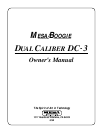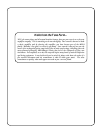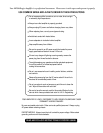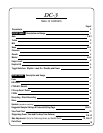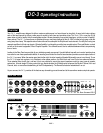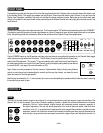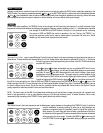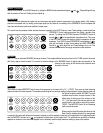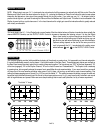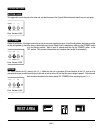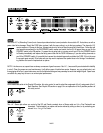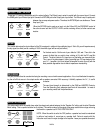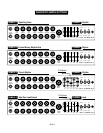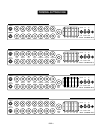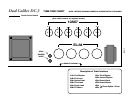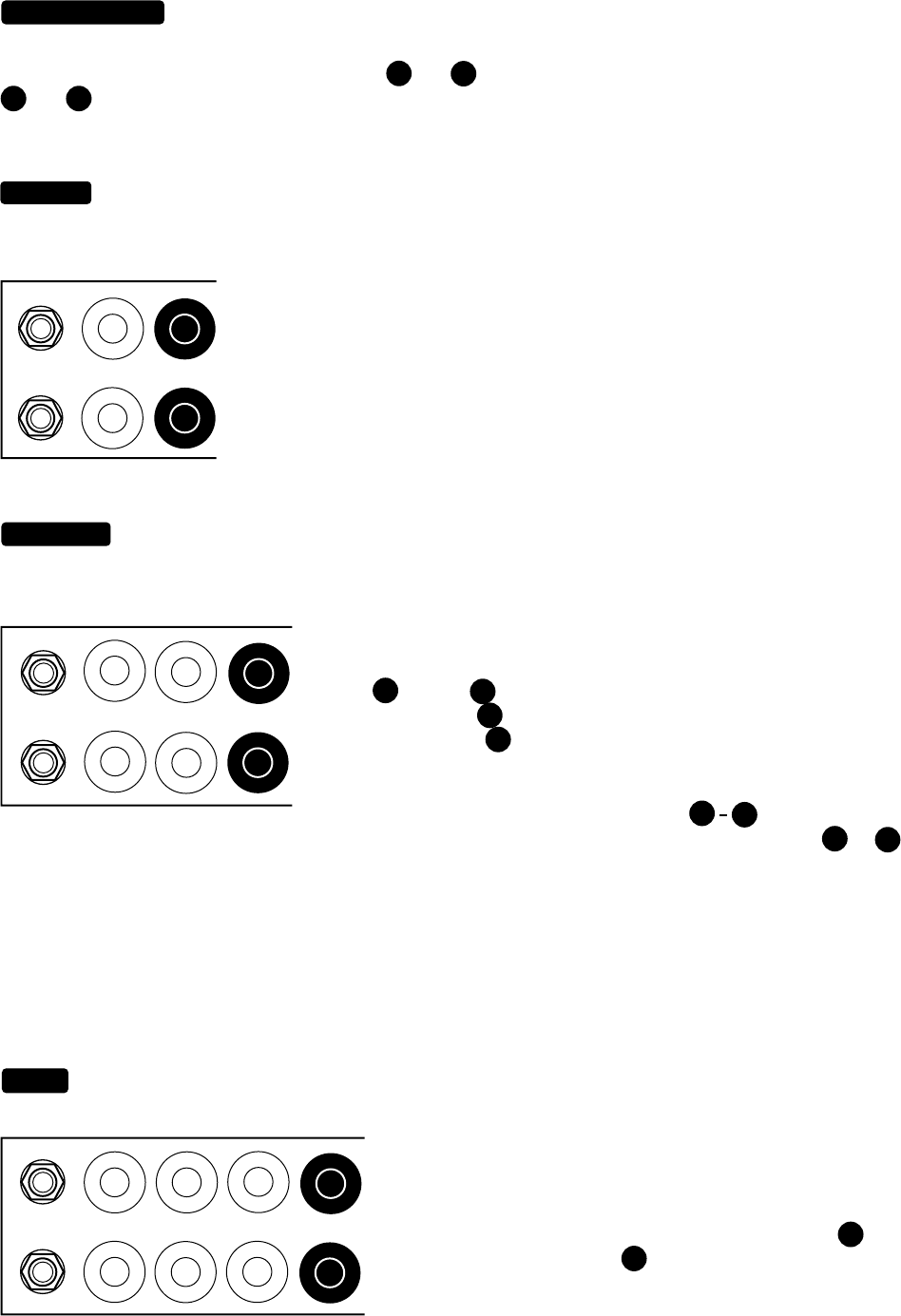
PAGE 3
probably a good time to mention that most of the great sounds can be found by setting the GAIN Control moderately, especially in the
LEAD Channel. For example, somewhere between
2
thru
6
In the RHYTHM Channel try setting this control somewhere between
3
thru
8
. Use of moderation here will reduce the likelihood of pesky tube microphonic problems ever occuring, while at the same
time making the two channels easier to balance in relative listening volume and effects send signal strength.
As with most guitar amplifiers, the TREBLE Control is the strongest of the three rotary tone controls. It controls the blend of high
frequencies in a wide band between the midrange and presence frequency ranges. Its setting on the DC-3 also determines the blend
and strength of the MIDDLE and BASS Controls. Set high, it is the dominant control, minimizing
the amount of MID and BASS that would be possible in the mix. Set low, the TREBLE be-
comes the recessive control and a warmer, darker blend is produced. Dial with care. Subtle
tweaking of this control tends to produce the best results.
Your new Dual Caliber uses a unique Midrange Circuit that not only blends in rich warm midrange, but goes beyond to give you an
added bonus. Through endless daily tone dreaming, the “if-only” design dictum led to the dial-in-gain boost. In the DC-3 a third over
the top crunch sound was made possible by the inclusion of the RHYTHM Channels dual
purpose MID Control.
From
0
to about
3
the taper is adjusted to act as a very effective MID Control. As you
increase the MID to
4
and above, you will hear the lower Mids getting more pronounced
and fatter. At about
6
the MID leaves behind the old notion of being a tone control
and becomes a truly usuable gain control. This upper range is a smokin’ addition to the
RHYTHM Channel’s GAIN Control for all kinds of higher gain rhythm sounds. Try the MID
Control set high and the GAIN Control at about
6
7
for a cool blues solo sound. If
this still isn’t crazy enough for you...Max the GAIN and TREBLE Controls and set the PRESENCE Control to
0
or
1
, turn on the
Graphic and give it the old “V” curve and plug into a 4x12 with some Celestion Vintage 30’s or 25’s. This should be sufficently heinous
for even the sickest crunch fiends. As you can see, the versatility that this dual purpose MID Control lends to the Rhythm Channel
greatly expands its usefulness as both a clean and overdrive channel.
NOTE: The lower region of the MID Control determines midrange punch and boldness in lower gain sounds and a smooth vocal
blend in high gain sounds. It can be very effective acting as a “cut through the band control” in certain situations. Dial to taste,
remembering that the setting of the TREBLE Control greatly effects this controls strength.
This control blends in the lower frequencies and its effectiveness, again, depends on the setting of the TREBLE Control. It should be
set with moderation as extreme settings in either low or high directions can
produce an unbalanced tone. Be “especially” careful in higher Gain settings of
either channel. Too much Bass will cause a flabby unfocused sound that can’t
be dialed out with the graphic EQ because excessive Bass has been introduced
to the pre-amp in the early stages. Try setting the BASS to
6
for clean sounds
in the RHYTHM Channel and
4
or below when dialing up high gain overdriven
GAIN:
(Continued)
TREBLE:
GAIN TREBLE
INPUT
FOOT
SWITCH
5
5
MIDRANGE
GAIN TREBLE MID
INPUT
FOOT
SWITCH
2
5
BASS:
GAIN TREBLE MID BASS
INPUT
FOOT
SWITCH
6
5



